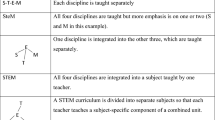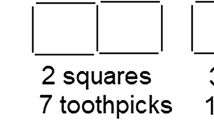Abstract
Students who are taking introductory geology courses only to fulfill a science requirement often cite the absence of math as a factor in their decision to take geology rather than chemistry, physics, or astronomy. Typically these students have poor high school backgrounds in math and science, and feel much more comfortable with a course that is perceived as a descriptive science rather than a quantitative one. In many introductory geology classrooms, unfortunately, this student perception is a true reflection of the way their course is being taught. Any overt introduction of mathematical concepts, therefore, is likely to be met with widespread resistance. Recent national initiatives in science education have emphasized the integration of concepts from mathematics as part of an interdisciplinary problem-solving approach to science. However, simply introducing mathematical formulae and plugging in proscribed numbers to get a predetermined answer does not meet this need. Mathematical concepts must be slipped in covertly, as geologically based steps in the problem-solving process, in such a way that a geologically relevant answer may be obtained without students ever realizing that they were working a math problem. The key to successfully integrating mathematical concepts into geology courses, without alienating students, is to emphasize deriving geologically significant results as opposed to calculating them. On a conceptual level, numerical estimates derived through sound mathematical reasoning often provide equally valid and much more palatable results than an insistence on precise answers with a certain number of significant figures. For students who likely will never take another math or science course, it is critical, from a scientific literacy standpoint, to gradually and painlessly bring them to an understanding that geology is indeed a quantitative science.
Similar content being viewed by others
REFERENCES
American Association for the Advancement of Science, 1989, Science for all Americans: A project 2061 report on literacy goals in science, mathematics, and technology: AAAS Books, Department 2061, Waldorf, MD. 217 p.
American Geological Institute, 1991, Earth Science Education for the 21st Century: A Planning Guide: National Center for Earth Science Education, Alexandria, VA, 34 p.
American Geophysical Union, 1994, Scrutiny of undergraduate geoscience education: Is the viability of the geosciences in jeopardy?: American Geophysical Union, Chapman Conference, Washington, DC, 55 p.
Batiuk, 1988, Funky Winkerbean Cartoon Panel: North American Syndicate, Inc. (now King Features Syndicate), New York, April 12, 1998 panel.
Chernicoff, S., and Fox, H. A., 1997, Essentials of Geology: Worth Publishers, New York, 411 p.
Christopherson, R.W., 1994, Geosystems: An introduction to physical geography, 2nd ed.: Macmillan Publishing, New York, 663 p.
Ferguson, J., 1994, Introduction to linear algebra in geology: Chapman and Hall, London, UK, 203 p.
Kober, N., 1993, EdTalk: What we know about science teaching and learning: Council for Educational Development and Research, Washington, DC, 95 p.
Lacampagne, C. B., 1993, State of the art: Transforming ideas for teaching and learning mathematics: U.S. Department of Education, Washington, DC, 14 p.
National Council of Teachers of Mathematics, 1996, A Perspective on reform in mathematics and science education: Eisenhower National Clearinghouse for Mathematics and Science Education, Columbus, OH, 64 p.
National Council of Teachers of Mathematics, 1989, Curriculum evaluation standards for school mathematics: National Council of Teachers of Mathematics, Reston, VA, 258 p.
National Research Council, 1996, National Science Education standards: National Academy Press, Washington, DC, 262 p.
National Science Teachers Association, 1992, Scope, sequence, and coordination of secondary school science. Vol. 1, The content core: National Science Teachers Association, Washington, DC, 152 p.
Plummer, C. C., and McGeary, D., 1996, Physical geology: Wm. C. Brown Publishers, Dubuque, IA, 539 p.
South Carolina Department of Education, 1993, South Carolina Mathematics Framework: South Carolina Department of Education, Columbia, SC, 157 p.
U.S. Department of Education, 1991, America 2000: An education strategy: U.S. Department of Education, Washington, DC, 62 p.
Wagner, J. R., 1993, The effect of instructional strategy on student performance and affective attributes in a restructured earth science course for elementary education majors: unpublished doctoral dissertation, University of South Carolina, 125 p.
Waltham, D., 1994, Mathematics: A simple tool for geologists: Chapman and Hall, London, UK, 185 p.
Wicander, R., and Monroe, J. S., 1995, Essentials of geology: West Publishing Company, St. Paul, MN, 428 p.
Author information
Authors and Affiliations
Rights and permissions
About this article
Cite this article
Wagner, J.R. Sneaking Mathematical Concepts Through the Back Door of the Introductory Geology Classroom. Mathematical Geology 32, 217–229 (2000). https://doi.org/10.1023/A:1007579407201
Issue Date:
DOI: https://doi.org/10.1023/A:1007579407201




